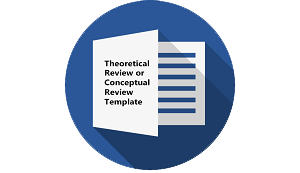Language use by tertiary students: The case of the National University of Lesotho
DOI:
https://doi.org/10.30957/lingua.v16i2.598Keywords:
Communication, Language creativity, Communicative competence, Componential theory of creativityAbstract
This study interrogates the use of language by students at tertiary. It focuses on students’ interactions with one another outside classroom setting. The study hypothesizes that the language used by university students display richness and yet complexity of human language. In focus groups, third year students were requested to give words which according to them have acquired new meanings on campus as compared to their common use anywhere else. Thus, such words should be believed to have their ‘campus’ meaning versus their ‘home’ meaning on the basis that their campus meanings might only be understood amongst university students while at the same time would be given a different meaning when used outside the university. Content analysis was done drawing on the underpinnings of communicative competence and componential theory of creativity frameworks. Data yielded significant patterns of language use including polysemy, among tertiary students; therefore, the study concludes that students’ exploitation of language is attributive of their communicative competence and creativity.
Downloads
References
Altheide, D. (1996). Qualitative Media Analysis. Thousand Oaks, CA: Sage.
Braaten, J. (1991). Habermas’ critical Theory of Society. Albany: State University of New York.
Cannon-Bowers, J. A., Salas, E. & Converse, S. (1993). Shared mental models in expert team decision making. In N. J. Castellan Jr. (Ed.).Individual and Groups Decision Making: Current Issues. Hillsdale, NJ: Lawrence Erlbaum,pp.221-246.
Chan, Z. Y. (2017). A Qualitative study on communication between nursing students and the family members of patients. Nurse Education Today, 59,33-37. www.elsevier.com/locate/nedt.2/20/2018.
Clark, H. H. (1996). Using Language. Cambridge: Cambridge University Press.
Cleary, S.( Ed.). (1999). The Communication Handbook. Cape Town: Juta and Co. Ltd.
Crabtree, F. B. & Miller. M. L. (1992). Doing Qualitative Research, Part 657. Sage University: Sage Publications.
Crystal, D. (1987). The Cambridge Encyclopedia of Language. Cambridge: Cambridge University Press.
Evans, V. & Zinken, J. (2006). Figurative language in a modern theory of meaning construction: A lexical concepts and cognitive models approach.(N.P.)
Falkum, I. L. (2011). The semantics and pragmatics of polysemy: A relevance-theoretical account. A doctoral thesis. University College London. [discovery.ucl.ac.uk/1139079/1/1139079.pdf]. Accessed 2/23/2018.
Fillmore, C. J. &Atkins, B. T. (2000).Describing polysemy: The case of ‘crawl’. In Ravin, V, & C, Leacock. Polysemy: Theoretical and Computational Approaches. Oxford: Oxford University Press.
Gillham, B. (2000). Case Study Research Methods. Bloomsbury: Bloomsbury Academic.
Goldfinch, J. & Hughes, M. (2007).Skills, learning styles and success. Active Learning in Higher Education, 8(3).
Greene, J. O. and Burleson, B. R. (Eds). (2008). Handbook of Communication and Social Interaction Skills. New Jersey: Taylor & Francis e-Library.
Harvey, P. &Ahmann, E. (2016). Validation: a family-centred communication skill. Nephrol. Nurse Journal, 43(1), 61-66.
Hsieh, H. & Shannon, S. E. (2005). ‘Three approaches to qualitative content analysis’.<journals.sagepub.com/doi/abs/10.1177/1049732305276687?journalCode=ghra>.
Huebsch, J. C. (1995). Communication Skills. Pretoria: Kagiso Publishers.
Hurford, J., Heasley, B. & Smith, M. (2007). Semantics: A Coursebook. (2nded.). Cambridge: Cambridge University Press.
https://hbswk.hbs.edu/item/componential-theory-of-creativity
Hymes, D. H. (1993). Inequality in language: Taking for granted. In J. E. Alatis (Ed.). Language, communication and social meaning. 23-40. Washington, D.C.: Georgetown University Press.
Johnson, K. & Johnson, H. (1998). Communicative competence. Encyclopedic dictionary of applied linguistics, 62-67. Oxford: Blackwell.
Katamba, F. (1993).Morphology. London: Macmillan Press Limited.
King, K., Porr, C. & Gaudine, A. (2017). Fostering academic success among English as an additional language nursing students using standardized patients. Clinical Simulation in Nursing, 13 (10), 524-530.
Mahmud, M. M. (2014). Communication aptitude and academic success. Journal of Procedia Social and Behavioural Sciences, 13(4), 125-133.
McCroskey, J. C., Booth-Butterfield, S. & Payne, S.K. (1989). Impact of communication apprehension. Communication Quarterly.
Meyer, C. B. (2001).A Case in case study methodology. Field Methods, 13(4),329-352. [jashotta.tripod.com/case.pdf].
Mkanganwi, K. G. (1987). Linguistics, language and Zimbabwe. Proceedings of the second linguistics association for SADCC universities conference, held at the University of Zimbabwe, 2-5 September.
Nerlich, B. (2003). Polysemy: past and present. In Polysemy: Flexible Patterns of Meaning in Mind and Language. Nerlich, Z., Todd, V., Herman, D. & Clarke, D. 49-76. Berlin: Moiuton de Gruyter.
O’Grady, W.D., Dobrovolsky, M. & Katamba, F. (1996).Contemporary Linguistics: An Introduction. California: Longman.
Pearson, J. C., Nelson P. E., Titsworth, S. & Harter, C.(2003). Human communication. Boston: McGraw Hill.
Romaine, S. (1992). Language, education and development. Oxford: Clarendon Press.
Roze Des Ordons, A. L., Doig, C. L., Couillard, P. & Lord, J. (2017). From communication skills to skillful communication: A longitudinal integrated curriculum for critical care medicine fellows. Academic Medicine, 92(4), 501-505.
Samovar, L. & Porter, R. (2001). Communication and Cultures. Wadsworth; Thompson Learning.
Sandelowski, M. (2010).What’s in a name? Qualitative description revisited. Res. Nurse Health, 33, 77-84.
Stake, R. (1995). The Art of Case Study Research. 1000 Oak: Sage Publication.
Steinberg, T. (2000). An Introduction to Communication Studies. Cape Town: Juta and Co. Ltd.
Taylor, J. R. (2006). Polysemy and the lexicon. In Cognitive Linguistics: Current Applications and Future Perspectives. Achard, K. G., Dirven, R. &Ruizde, M. I. (Eds.) 51-80.
Thompson, N. (2011). Effective Communication: A Guide for the People professions. (2nded.) New York: Palgrave Macmillan.
Wiemann, J. M. (1997). Explication and test of a model of communicative competence. Journal of Human Communication Research, 3, 195-213.
Yahaya, A. & Ramli, J. (2009). The relationship between self-concept and communication skills towards academic achievement among secondary School students in Johor Bahru.<www.ccsenet.org/journal.html>.
Yin, K. R. (2009). Case study research design and methods. London: Sage Publication.
Zimmerman, B. J. (2000). Self-efficacy: An essential motive to learn. Contemporary Education Psychology, 25(1), 82-91.
Downloads
Published
How to Cite
Issue
Section
License
Authors who publish with this journal agree to the following terms:
- Authors retain copyright and grant the journal right of first publication with the work simultaneously licensed under a Creative Commons Attribution-ShareAlike 4.0 International License that allows others to share the work with an acknowledgement of the work's authorship and initial publication in this journal.
- Authors are able to enter into separate, additional contractual arrangements for the non-exclusive distribution of the journal's published version of the work (e.g., post it to an institutional repository or publish it in a book), with an acknowledgement of its initial publication in this journal.
- Authors are permitted and encouraged to post their work online (e.g., in institutional repositories or on their website) prior to and during the submission process, as it can lead to productive exchanges, as well as earlier and greater citation of published work (See The Effect of Open Access).















